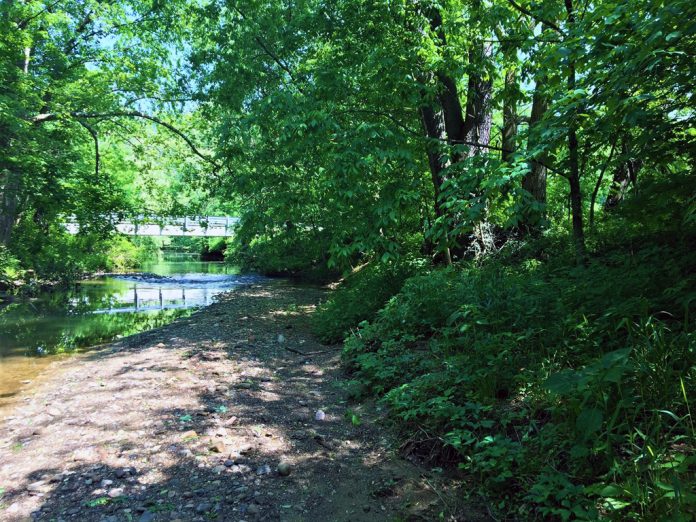Ohio’s streamside forests are some of the most productive features of the landscape. Formally called riparian buffer zones, these are transitional areas where the upland environment meets the aquatic environment of a stream. This transition in the landscape is typically in the form of a wet area that contains vegetation adapted for life in saturated soil.
These special adaptations have provided the vegetation with certain filtering capacities that are unique to other types of vegetation found in upland ecosystems, making riparian areas valuable in protecting our water resources.
Best agronomic practices that promote maximum infiltration are ideal in any setting. However, in areas of low infiltration, such as tilled agricultural fields or in urban areas, water runs off rapidly across the land while picking up and transporting material, often depositing sediment in streams that do not have a vegetative buffer to intercept it.
Pollution
Sedimentation is one of the most significant nonpoint sources of pollution. Sediment covers the stream bed in a blanket of silt, choking out macro invertebrates that larger aquatic organisms depend on for food. Sediment also introduces nutrients such as nitrogen and phosphorous that can cause a bloom of algal growth in downstream ponds and lakes that will shade out other aquatic plants, lower the dissolved oxygen levels, and can be a source for bacteria and viruses that are harmful to humans and wildlife.
Filter out sediment
A riparian buffer with a good mix of trees, shrubs, and herbaceous plants will trap and filter out much of the sediment that is being carried by runoff. Plants will take up much of the nitrogen and phosphorous for their own use, preventing it from entering the stream. These areas also act as a sponge, soaking up surface and subsurface flow, and then slowly dosing it into the stream.
This prevents dramatic changes in water level associated with flooding. This also prevents cutting of the stream banks and stream bed, which would further degrade water quality.
The canopy of the riparian forest shades and cools the stream, which helps to increase dissolved oxygen while creating the natural habitat conditions that native stream fish and other organisms need to thrive. The canopy also provides a plentiful source of fallen leaves for small organisms to feed on.
The conditions that this habitat provides for many species of endangered and threatened plants and animals make these areas extremely bio-diverse, with more than 70 percent of terrestrial animals using these areas at some point during their lives.
Landowners with streams on their property can manage their riparian zones through state and federal cost-share programs that provide financial assistance for practices that enhance these beneficial areas.
Getting started restoring and maintaining your riparian zone is a way to preserve your precious topsoil, protect the health of your water resources, and enhance the aesthetics of your property through the plantings of a variety of native species such as bald cypress, black willow, and sycamore.
Additionally, several of these wet soil species provide excellent yields of hard and soft mast for your deer and other wildlife. Examples include persimmon, high bush blueberry, and the beautiful swamp white oak. For assistance, contact your local conservation district to receive recommendations.













